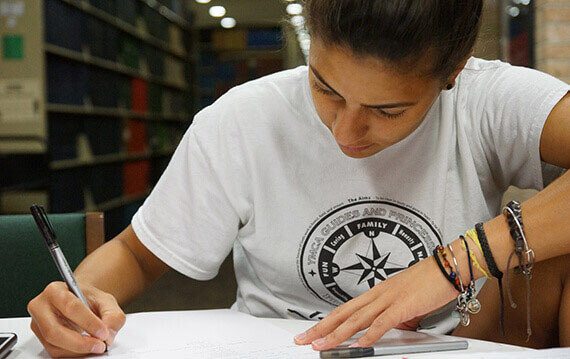6 SAT Tips to Help You Achieve Your Highest Score
The SAT can play a big role in determining whether you get into your college of choice, so getting the highest possible SAT score is critical. A higher SAT score can increase your chances of acceptance into your dream school and even increase your financial aid package.

The good news is you can take the SAT as many times as you’d like. Admissions officials do not view retests as negative factors on your application. Many universities use your highest test scores on each section to determine admission and scholarship opportunities. A student who has taken the SAT two or three times shows me that they have the motivation to be successful at the University of St. Thomas.
If you have already taken the test once, you should have an idea of what the format of the test is like and which areas you might need to focus your studying on. You’ll also be better prepared for the limited amount of time given for each section. To help with your studying the second (or third!) time around, here are some SAT tips to score big on the redesigned SAT test:
1. Stay Focused and in the Flow of the SAT Test
It is common practice for some students to flip back and forth between the test booklet and answer sheet. Try not to do this, as it wastes time and interrupts the flow of the test. To save time, focus on the test booklet and only flip to the answer sheet after you have completed a full page of answers.
2. Brush Up on Your Algebra
The Math section of the redesigned SAT focuses more on algebra and general problem solving, as well as data interpretation. Geometry is still present, but it accounts for a much smaller portion of the test.
3. Practice Solving Math Problems without a Calculator
One of the most significant changes to the Math section is the addition of a calculator-free portion. This allows the SAT to test for real mathematical understanding, as opposed to the ability to perform calculations with a machine. You should consider completing all your math homework and test practice by hand. This may make the work harder in the short term, but in the long term, you will be ready for this section of the redesigned SAT.
4. Understand Answer Formats
You are no longer penalized for wrong answers, and this means that there is no longer a reason to leave any questions blank. Eliminating even one incorrect answer choice can lead to an improvement in your overall score. When you prepare for the exam, focus on not just finding the correct answers, but on quickly identifying incorrect responses, too.
5. Follow an Essay Template
Although the essay section is technically optional, many competitive colleges require students to submit their SAT score with the essay. To have a competitive advantage over other students, develop a pre-formed essay template that will work for almost any argumentative passage you read on test day. Templates will not only help you write unbelievably powerful essays, but also save you a lot of time other students will waste on test day. You can find numerous SAT essay template examples online.
6. Focus More on Reading and Less on Vocabulary
The redesigned SAT will feature a single Evidence-Based Reading and Writing portion. Here, the primary shift will be an emphasis on analyzing real-world texts. Vocabulary will still be relevant, since you will need to understand what you read. Instead of memorizing lists of vocabulary words, work on a strategy to break down a passage and understand each individual section.
Scoring well on the SAT test is important for many reasons, from getting into the college of your choice to getting a higher financial aid award. Keep these SAT tips in mind as you prepare to ace your SAT test.
Want to learn more about the University of St. Thomas? Just fill out this form, and we’ll send you info on our degrees and programs.